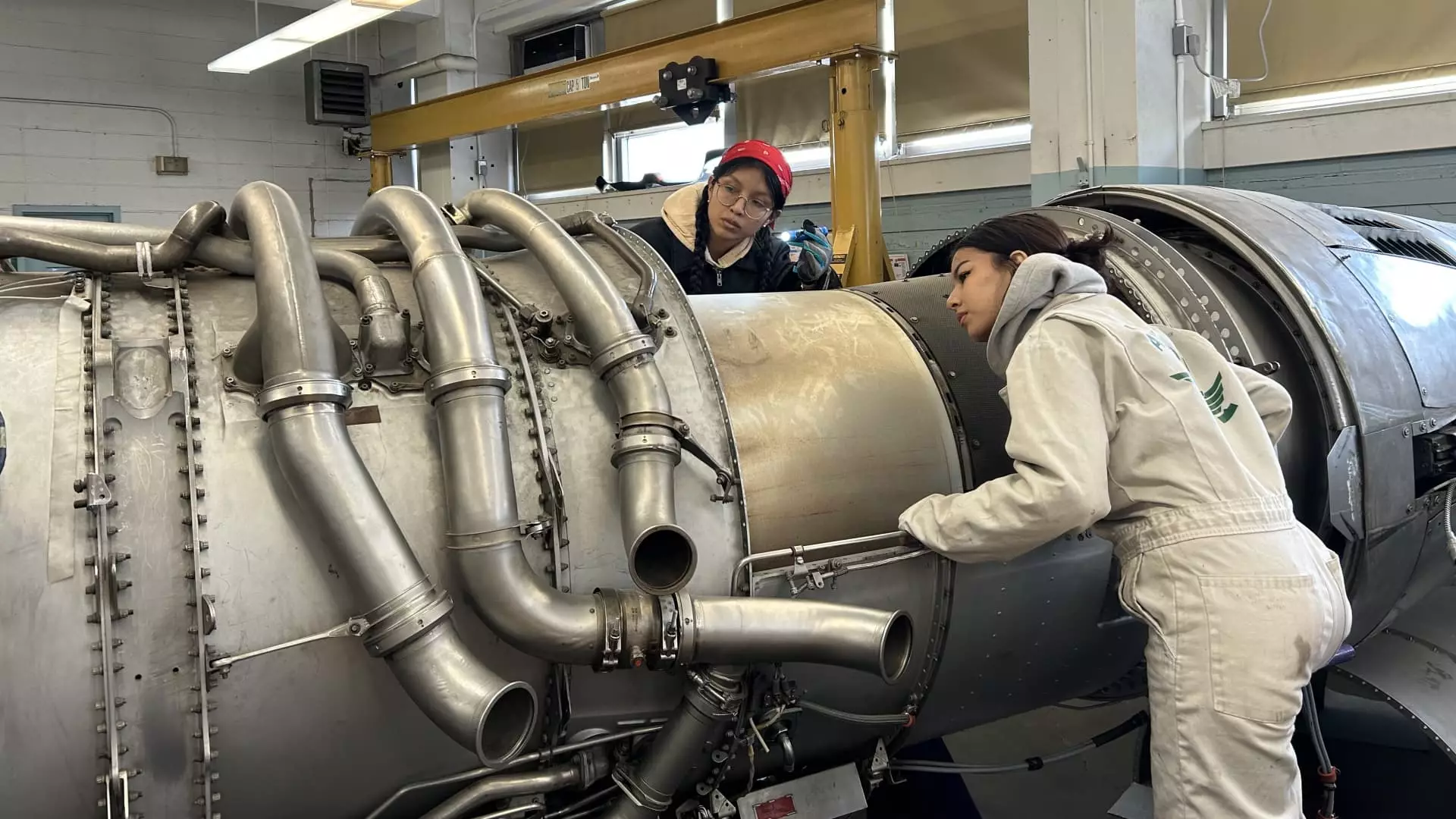As the aviation industry soars back from pandemic-driven downturns, it faces an ominous specter that could ground its recovery: a severe shortage of skilled workers. With an aging workforce—where the average aircraft mechanic is a daunting 54 years old and 40% are over 60—the industry’s capabilities hinge on a demographic cliff. The Aviation Technician Education Council and consulting firm Oliver Wyman released a chilling report, projecting a shortfall of 25,000 aircraft technicians by 2028. This is not merely a statistic; it is a siren call for immediate industry introspection and action.
The lack of new entrants into aviation careers raises the grim question: who will take the mantle from these aging technicians? David Seymour, the Chief Operating Officer of American Airlines, underscores the urgency of the situation, emphasizing that the talent pipeline has been on a steady decline since the 1980s—a trend worsened by the pandemic. Those who endured layoffs or early retirements were not just numbers but experienced professionals whose knowledge is invaluable.
Competing for Talent in a Tight Labor Market
Despite attractive salaries that hover around $80,000 to $90,000 for mechanics, the recruitment of fresh talent remains a chore. The median salary for technicians in the U.S. stands at $79,140, significantly outstripping the national median income of $49,500. However, salaries and incentives alone might not be enough to lure younger workers, particularly when they are conditioned to chase careers in tech or digital sectors.
In a country grappling with only a 4.2% unemployment rate, one cannot ignore the competitive landscape. Manufacturing jobs represent about 9% of U.S. employment; nonetheless, the industry’s perception is tainted by geographical immobility that stunts growth. Professors, like Gordon Hanson from Harvard, aptly highlight that factory jobs necessitate a localized labor pool which it is increasingly difficult to satisfy. As factories reopen and manufacturers scale their operations, the dearth of workers becomes painfully evident.
Inventive Solutions Become Imperative
The question looms large: what innovative strategies are being implemented to ensure a steady influx of skilled workers? Companies like GE Aerospace are tailoring their recruitment efforts not only toward high school graduates but are venturing into junior high realms to attract interest in aviation careers. Programs that offer hands-on experience and FAA certifications foster excitement among potential recruits, but is it enough to spark a genuine interest in the sector?
Students like Sam Mucciardi from Aviation High School illustrate hope; they are willing to forgo traditional pathways in favor of intensive vocational training. But while these initiatives are commendable, they need robust support from industry stakeholders and educational institutions alike. Otherwise, the gap between available positions and qualified applicants will continue to widen.
Beyond Salaries: Changing Perceptions of Aviation Careers
For all the financial incentives offered, a profound misunderstanding persists around manufacturing roles. The future of aviation is largely misconceived to be grim and laborious, overlooking that it encompasses cutting-edge technology and innovation. GE’s Christian Meisner points out that high-tech advancements are at the forefront of aviation mechanics; modern manufacturing involves precision machining and exotic materials, far removed from the stereotypical image of grimy factories.
Appealing to the aspirations of younger generations is vital. As industry leaders have begun to engage with students earlier, it is crucial to convey that careers in aviation are not only stable but also technologically significant. This shift in perspective may cultivate a richer talent pool and ultimately lead to a thriving workforce.
The Ripple Effect of a Talent Shortage
The implications of a dwindling workforce extend far beyond the immediate realm of aircraft mechanics. Air traffic control and ancillary services are similarly impacted, stumping not only growth but also raising safety concerns across the industry. The cascading effect of workforce shortages translates into longer delays, reduced safety standards, and could cripple an industry pivotal to America’s economic fabric.
As companies scramble to implement hiring drives and raise wages, there’s an inherent risk of overlooking smaller businesses that support the industry. The Aeronautical Repair Station Association warns that the looming labor shortage could undermine not only aviation but countless interdependent sectors. Thus, the onus falls on the industry’s gatekeepers to craft inclusive policies that sustain not only the giants but the smaller players as well.
In this evolving landscape, a sense of urgency is palpable. The aviation sector stands at a crossroads; it can either embrace significant reforms or face an impending crisis that could forever alter its trajectory. The American job market is brimming with possibility, but without a concerted effort to attract and retain talent, the aspirations of many will be dashed by an intertwined fate of stagnancy within one of America’s most symbolic industries.


Leave a Reply